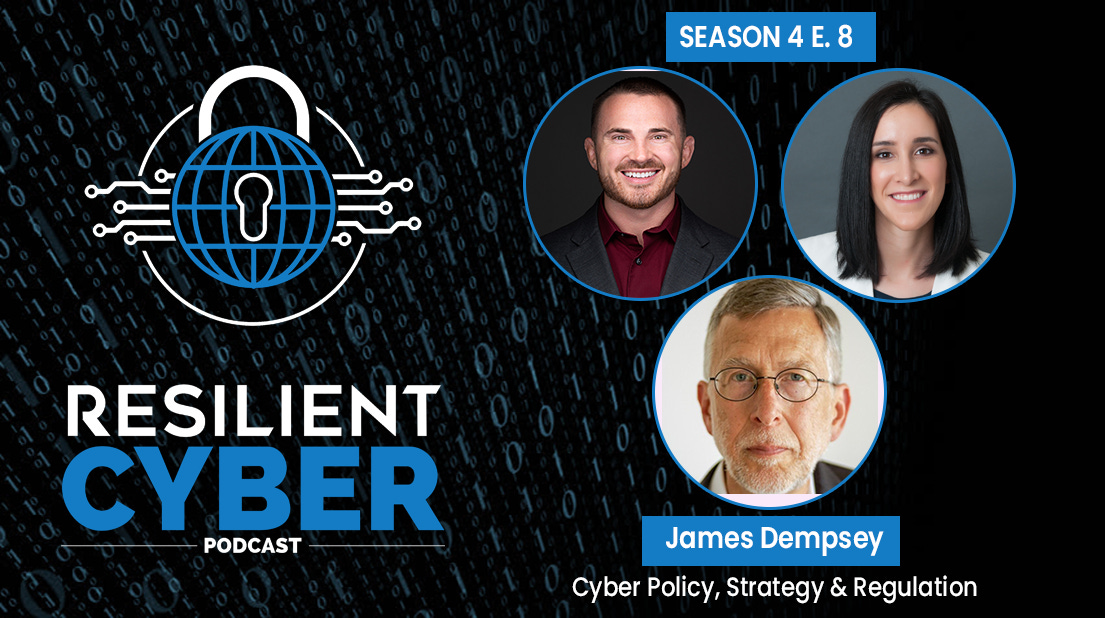Chris - I have to start with the intersection of law and cybersecurity. We're seeing major strides in regulations, both federal and state (like NYFDS), to regulate and enforce cybersecurity policies and program-based guidance. What are some of the emerging trends we're seeing in cyber law?
Chris - As you know, we recently saw the new National Cyber Strategy, which makes a push for shifting the burden/responsibility for cybersecurity on the vendor or those best positioned to address it. Why do you think it has taken us so long to get to this point? I know you've drawn parallels to other industries such as automobiles
Chris - On the topic of parallels to other markets and industries, such as automobiles, pharmaceuticals and manufacturing, there are some unique aspects of software, in the sense it isn't tangible or kinetic, and can be very opaque, What impact do you think those characteristics have on trying to regulate it like we have done with other industries?
Chris - The National Cyber Strategy also introduces the concept of Software Liability. This part of the strategy got the most aggressive response from industry and the community. Why do you think this makes everyone perk up so much?
Chris - Many started to raise questions such as who will define "secure", who and how will it be validated or verified, and where is the line of responsibility between the software supplier and consumer. Any thoughts on these topics and questions?
Chris - On the topic of regulation, many consider cybersecurity to be an example of a market failure. Can you explain what that is, and why some feel that way? How do you think think we balance regulation without stifling innovation in the tech industry?
Chris - I have worked on programs such as FedRAMP before, for Federal Cloud Services and I am familiar with NIST 800-171/CMMC as well for the DIB. Many argue, and I think there is merit to the claim that these sort of frameworks lead to smaller pools of suppliers and potentially a less diverse pool of market participants. Any thoughts on these impacts and if it is worth the trade off?
Chris - Many compliance and regulatory schemes either take one of two approaches. The first being a self-attested model where entities self-attest their compliance, such as NIST 800-171 for the DIB was, and the second is a 3PAO model, where a 3rd party verifies compliance, such as in FedRAMP. Each of these models has drawbacks, such as less than truthful or accurate self-assessments, or the 3PAO requirement becoming cumbersome, costly and a bottleneck. What do you think about these two approaches and where do you see us heading with regards to say the National Cyber Strategy, liability and so on?
Share this post

S4E8: Jim Dempsey - Cyber Policy & Regulation
resilientcyber.substack.com
1×
0:00
-44:39
S4E8: Jim Dempsey - Cyber Policy & Regulation
A look at the National Cyber Strategy and much more
Mar 10, 2023
Resilient Cyber
Resilient Cyber brings listeners discussions from a variety of Cybersecurity and Information Technology (IT) Subject Matter Experts (SME) across the Public and Private domains from a variety of industries. As we watch the increased digitalization of our society, striving for a secure and resilient ecosystem is paramount.
Resilient Cyber brings listeners discussions from a variety of Cybersecurity and Information Technology (IT) Subject Matter Experts (SME) across the Public and Private domains from a variety of industries. As we watch the increased digitalization of our society, striving for a secure and resilient ecosystem is paramount.Listen on
Substack App
RSS Feed
Recent Episodes














S4E8: Jim Dempsey - Cyber Policy & Regulation